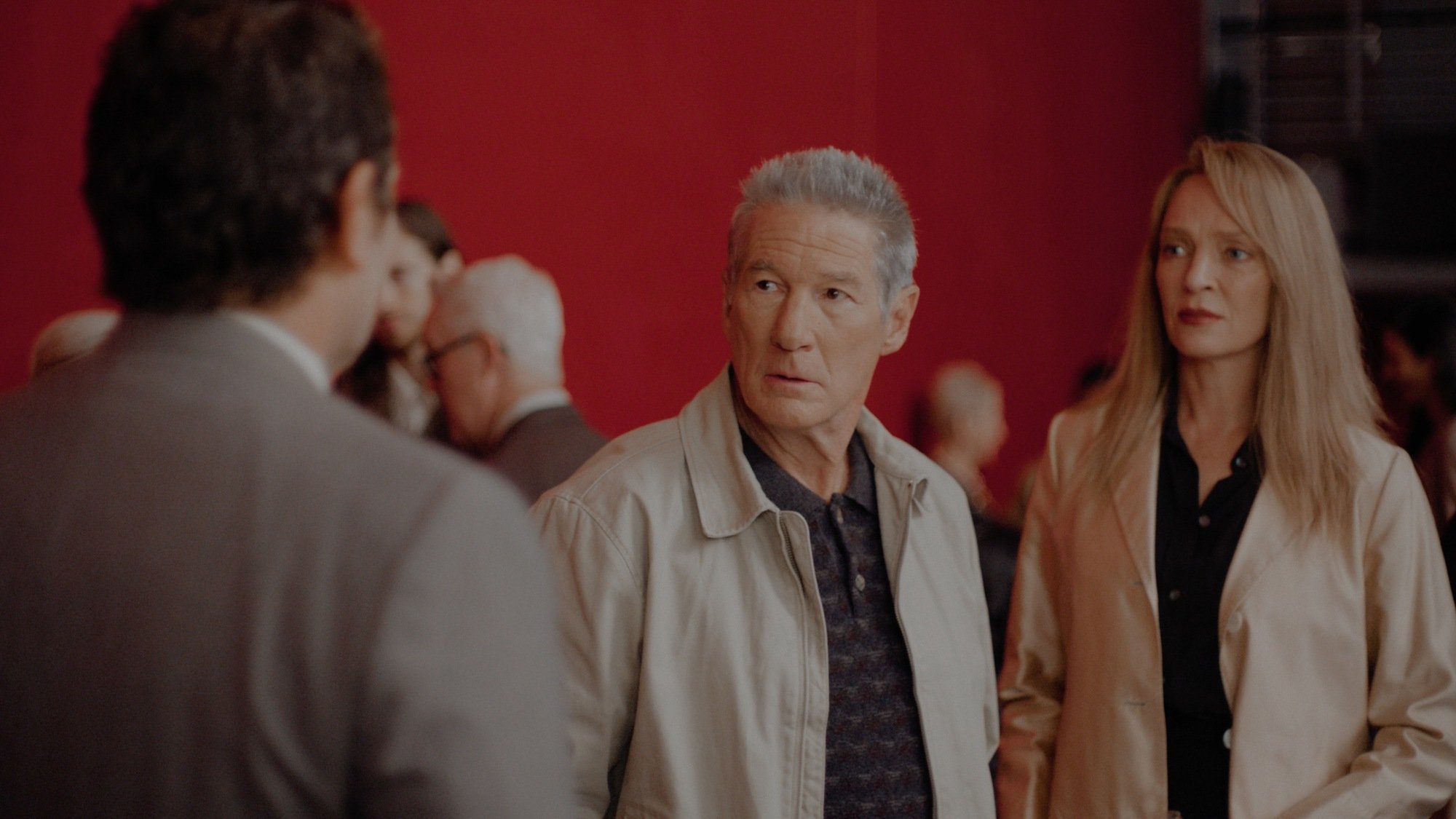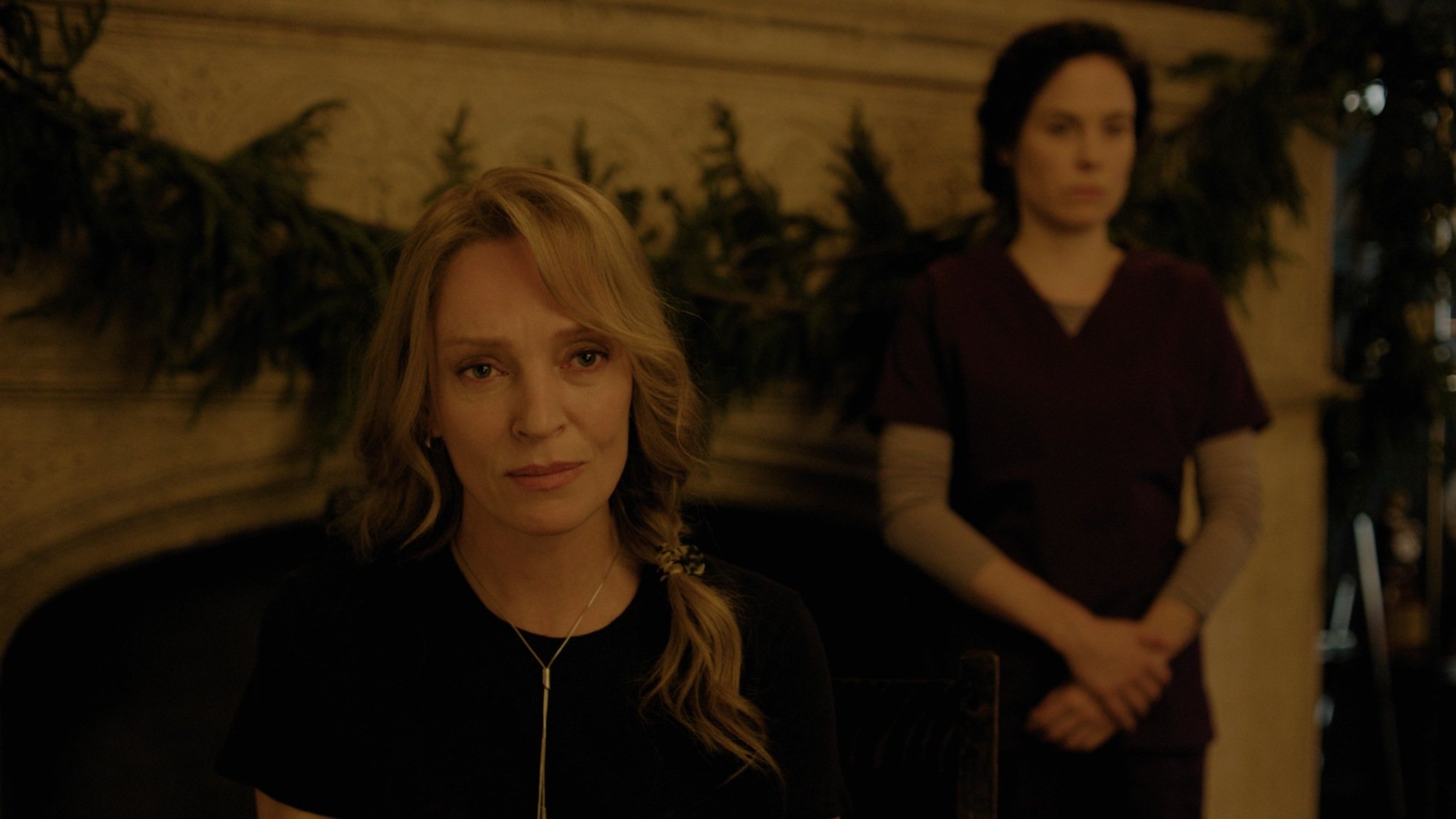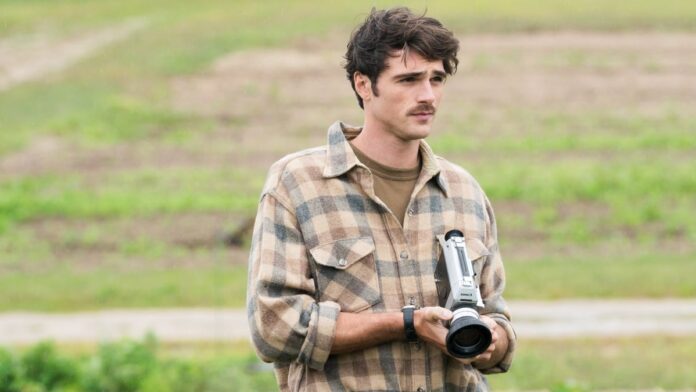A story that unfolds on death’s doorstep, Oh, Canada is a thoughtful, reflective work from Paul Schrader, if an occasionally rushed one. Whether or not its hurried approach is a defect — it most certainly plays like one, as though there was only so much time to wrap it up before the reaper comes a-calling — it also results in a more intimate embodiment of everything on Schrader’s mind when it was made.
New York Film Festival preview: 10 movies you ought to know about
The tale of a documentary filmmaker on his deathbed who becomes the camera’s subject, the film is based on the 2021 novel Foregone by Russell Banks. (Schrader previously adapted Banks’ novel Affliction in 1997.) The author would sadly pass away in January 2023, a few months before filming began, and shortly after Schrader himself had a brush with death thanks to COVID-19.
This proximity to grief, and to the grave, informs Oh Canada‘s storytelling, which plays like a recollection of regrets. Its structure and narrative POV shift in beguiling ways, as though the movie’s main character — played by two actors at different ages — was rushing to absolve himself of sin. Along the way, he confuses and collapses his many confessions into a single, muddled mythology that constantly shifts through elliptical editing, as if to reflect the character’s disoriented state of mind. The details may be unreliable, but his story pulses with riveting emotional truths, born from lifelong remorse.
What is Oh, Canada about?
Now confined to hospice care, Canadian filmmaker Leonard Fife (Richard Gere) agrees to an interview conducted by his former film students, Malcolm (Michael Imperioli) and Diana (Victoria Hill), during his final weeks of life. Cancer has ravaged his body, and his treatment has left him tired, but as an artist who has always used his camera to unearth people’s truths, he hopes Malcolm and Diana’s lens will do the same for him, and help him unburden himself as his wife, Emma (Uma Thurman), looks on.

Many details of Leonard’s life are publicly known, especially his conscientious Vietnam draft-dodging, after which he left the U.S. for the Great White North as a political asylee. However, just as much of his story remains shrouded in mystery, which he now unpacks as last rite. In flashbacks set in the ’60s and ’70s, Leonard is played by Jacob Elordi (of Priscilla fame), though on occasion, Gere himself strides through scenes where Elordi ought to be, a swap that occurs either through straightforward cuts, or the occasional Texas Switch.
The seamlessness with which the older Leonard replaces his younger self has an eerie effect, as though something in the fabric of his story were deeply amiss. As he reveals some particularly shameful and macabre family secrets, Emma remains in denial over his revelations and insists that Leonard must be confused about the details. He is, in a way, given the overlap between events and characters he recalls, but all of these revelations come from a place of deep pain and repression. Whether or not they’re logistically true, Gere makes their emotional truth feel undeniable via a towering, career-defining performance as a man both afraid and determined to stare at the camera and be seen by it, as he struggles to purge himself of demons that have long been eating at his soul.
Paul Schrader brings a thoughtful filmmaking eye to Oh, Canada.

Credit: Cannes Film Festival
Throughout Oh, Canada, Leonard’s regret is enhanced by Schrader’s interrogative filmmaking, which draws from numerous documentarian techniques. The film for which he provides his personal testimony — about his own life, and his work as anti-war activist after his illegal border-crossing — takes the form of a traditional interview talking head, albeit with an aesthetic twist that yields several haunting close-ups.
In order to pay tribute to Leonard, his students film him with the use of a camera set-up he invented. In reality, this is the Interrotron developed by The Thin Blue Line director Errol Morris; it’s a teleprompter that allows the subject to meet the interviewer’s eye (or rather, a reflection of it) while staring directly down the camera’s lens. By attributing the tool to the fictitious Leonard, Schrader creates a double-edged sword. The technique has long afforded Leonard the comfort of sitting behind a video monitor, rather than meeting his subjects’ gaze directly. But now, as the subject of his own camera, his confession occurs in a darkened, lonely room.
Mashable Top Stories
There are people nearby, like the filmmakers, and Leonard’s wife, Emma, whose reflection theoretically appears in the teleprompter, but we only ever glimpse this briefly. For the most part, Schrader locks us into a trio of close-ups of Leonard from three angles (two profiles, and one directly head-on), which appear on side-by-side video screens for Malcolm and Diana, and whose angles Schrader often cuts between. This triptych framing makes the cameras feel incredibly invasive, and by almost never cutting away from Leonard’s close-ups, Schrader forces us to view his self-reflections the way the aging documentarian sees them. His interviewers’ faces may be visible to him on a screen, but he recognizes his own filmmaking facade, and he knows just how lonely he is, here at the end of his life.
This loneliness takes stirring form during Leonard’s flashbacks, too. In isolated moments, Elordi and Gere’s attention occasionally drifts from the characters to whom they’re speaking, and their gaze falls upon nothing in particular, as though they know they’re trapped in a framing device. People from other points in the story sometimes appear where they shouldn’t, and on occasion, a white light consumes the frame, as though hypoxia (or the embrace of death) had threatened to provide Leonard with respite from his confessions.
The question then remains: Does Leonard want to die without having exposed the worst parts of himself?
Schrader’s shifting narrative makes Oh, Canada a holistic self-reflection.
Like Schrader’s most recent works — especially First Reformed, The Card Counter, and Master Gardener, a similarly confessional trilogy — Oh, Canada makes frequent use of voiceover. But in the aforementioned films, these narrations took the form of diary entries by each protagonist, whereas in the latest, the framing device is not only a camera this time, but one that isn’t in Leonard’s control.
Sometimes, the movie’s voiceover comprises snippets from Leonard’s filmed confession. Other times, it draws from an impassioned inner monologue. And on some occasions, the voiceover is spoken by a different character entirely, revealed to be a person who feels deeply betrayed by Leonard. In a literal sense, this patchwork of perspectives helps unearth Leonard’s story from multiple points of view, as Schrader deconstructs both a man and the mythology around him.
However, this shifting POV also serves a spiritual purpose. In essence, it blends the known and the imagined, and plays as though Leonard were in a desperate grasp at absolutely, slowly stepping outside himself and finding sudden empathy for someone he had deeply — perhaps knowingly — wronged.

Credit: Canne Film Festival
Oh, Canada is a work of deep-seated guilt frothing to the surface, and while its story is largely fictional, Schrader’s presentation takes strikingly personal form. On one hand, the older Leonard is styled to resemble Banks — Schrader’s friend of many years, who requested the filmmaker to adapt Foregone before he died — but from many angles, this man with short, graying hair and an unkempt beard also resembles Schrader himself, who made the film when it seemed like the nearly 80-year-old filmmaker might not win his long battle with COVID and pneumonia. (He was hospitalized, and suffered breathing difficulties in the aftermath.)
But there’s another personal element to the movie, too, one made far less apparent on screen. Around the time of Banks’ death and Schrader’s illness, the director also moved into an assisted living facility with his wife, Mary Beth Hurt, whose Alzheimer’s had been worsening. Oh, Canada is as much a film about death and elusive truths as it is about memory and its fleeting nature, and it’s hard not to read the visual manifestations of Leonard’s confusion as Schrader’s depiction of his wife’s condition.
Moreover, it depicts a filmmaker whose confessions to his wife — a woman who knows him better than anyone, but still doesn’t know his darkest moments — don’t seem to stick, both because of his illness and his inability to properly articulate them. While Schrader’s avatar suffers from distortions of recollection in the film, and is assisted by his wife, the reverse is true in reality. The idea of a man unable to fully give himself over to the woman he loves because of the impermanent nature of memory is the tragic result, regardless. While Oh, Canada talks through (but quickly skips past) many of these central themes — en route to a conclusion that wraps up too quickly, and too neatly — it stands as one of Schrader’s most personal, most moving, and most impactful films.
Oh, Canada is slated to hit theaters this December.
UPDATE: Sep. 25, 2024, 4:44 p.m. EDT Oh, Canada was reviewed on May 30, 2024, out of the Cannes Film Festival. This post has been updated to toast its New York Film Festival premiere.






